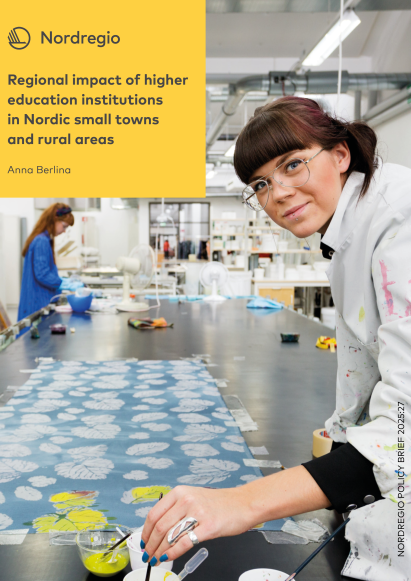Nordic regions and rural areas are under increasing pressure, facing complex and interconnected challenges such as climate change, demographic shifts, youth outmigration and a growing shortage of skilled workers in both public and private sectors. Education is widely recognised as a key tool for addressing these issues and plays a crucial role in supporting regional development.
However, the contribution of educational institutions to regional development varies, depending on both the regional context and the institutional characteristics, often differing significantly between regions with strong innovation systems and those that are more peripheral.
This policy brief explores how geography influences the regional development outcomes of higher education institutions (HEIs), with a particular focus on those located in rural and regional settings. It addresses the following questions:
- What role do HEIs located in small towns and rural areas play in regional development and how does this role differ from that of HEIs situated in core or metropolitan areas?
- What do “impact” and “efficiency” mean in the context of HEIs in smaller towns and rural areas and how can these concepts be effectively measured?
The policy brief draws on insights from a literature review and input gathered during the EDYNORA webinar held on 16 June 2025. It is aimed at policymakers, educational authorities, HEI representatives and researchers working in the field of education and regional development in the Nordic countries.









